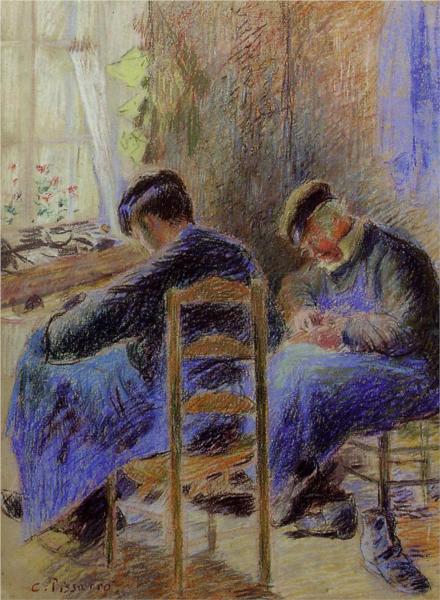
Competence characterizes the quality of attainment at the second level of development in our relations to the world.
Real
True Narratives
Biographies focusing on the subject's competence:
- Peter Baker and Susan Glasser, The Man Who Ran Washington: The Life and Times of James A. Baker III (Doubleday, 2020): “The former secretary of state’s experiences as a public servant offer timeless lessons in how to use personal relationships, broad-based coalitions and tireless negotiating to advance United States interests.”
Technical and Analytical Readings
We could say that our obligation in the world is to become competent, and live accordingly.
- Andrew J. Eliot, Carol S. Dweck and David S. Yaeger, Handbook of Competence and Motivation: Theory and Applications (The Guilford Press, Second Edition, 2017).
- Roberta R. Greene and Nancy R. Kropf, Competence: Select Theoretical Frameworks (Aldine Transaction, 2011).
- Lyle M. Spencer and Singe M. Spencer, Competence at Work: Models for Superior Performance (Wiley, 1993).
Photographs
Documentary and Educational Films
Imaginary
Fictional Narratives
Poetry
Music: Composers, artists, and major works
William Backhaus is an example of a classical pianist for whom competence was not an end point. “He play(ed) with an ideal fusion of technical command, emotional expressiveness, and carefree (yet never completely off-the-rails) abandon . . .” The idea of competence comes to mind because he was so technically sound in his playing. In his hands, “technical and musical challenges of the music seemingly pass(ed) without posing a challenge. He balanced an analytical approach with a clean and objective style that conveyed the feeling of the music.” Here is a link to his playlists.
Frequently, calling someone competent is damning with faint praise. Some composers are technically sound but lack any profound musical insight, or inspiration.
Arnold Bax’s tone poems are masterful. By contrast, his seven symphonies are about “Celtic atmosphere” but not much else. They are monotonously similar to each other, and do not develop musical ideas to any significant point of fulfillment.
- Symphony No. 1 in E-flat Major (1922) (approx. 32’)
- Symphony No. 2 in C Major (1926) (approx. 39’)
- Symphony No. 3 (1929) (approx. 42’)
- Symphony No. 4 (1931) (approx. 38’)
- Symphony No. 5 (1932) (approx. 38’)
- Symphony No. 6 (1935) (approx. 36’)
- Symphony No. 7 (1939) (approx. 44’)
Several of Heitor Villa-Lobos’ symphonies fall into a category with Bax’s, despite his apparent attempt to compose two symphonies about peace:
- Symphony No. 1, Op. 112, W 114, “O Imprevisto” (The Unforeseen) (1916) (approx. 26-44’)
- Symphony No. 2, W 132, “Ascenção” (Ascension) (1917-1944) (approx. 58’)
- Symphony No. 5, “A Paz” (Peace) (1920)
- Symphony No. 7, “Odissélia da Paz” (Peace Odyssey) (1945) (approx. 36-39’)
- Symphony No. 8 (1950) (approx. 24’)
- Symphony No. 9 (1952) (approx. 22’)
- Symphony No. 11 (1955) (approx. 27’)
Compositions:
- Friedrich Gernsheim’s (1839-1926) four violin sonatas – though not masterworks – are more than competent but they well express this value all the same: Sonata No. 1 in C minor, Op. 4 (1864) (approx. 17’); Sonata No. 2 in C Major, Op. 50 (1885) (approx. 25’); Sonata No. 3 in F Major, Op. 64 (1898) (approx. 23-30’); Sonata No. 4 in G Major, Op. 85 (approx. 23=26’).
- Joseph-Nicolas-Pancrace Royer, Premier Livre de Piéces pour Clavecin: workmanlike compositions.
- Carl Maria von Weber, Piano Concerto No. 2 in E-flat Major, Op. 32, J. 155 (1812) (approx 21-24’) represents a step forward from Weber’s First, Weber now adopting Beethoven’s style more than Mozart’s; the concerto is derivative in this respect.
- Raga Rajeshwari (Rajeswari – Rajeshvari – Rajesvari) is a Hindustani classical raag for performance during daylight hours. Performances are by Salamat Ali Khan and Shivkumar Sharma.
- Domenico Cimarosa, 32 Sonatas for piano; complete keyboard sonatas (approx. 148’)
- Bernardo Storace, harpsichord and organ music (approx. 138’)
- Jiří Antonín (Georg Anton) Benda, piano concertos, as performed by Howard Shelley and London Mozart Players (81’)
- Gottlieb Muffat, Componimenti Musicali Per il cembalo (1739) (approx. 134-150’): works for harpsichord by a relatively unknown composer with a more famous father, who is also well outside the pantheon of composers